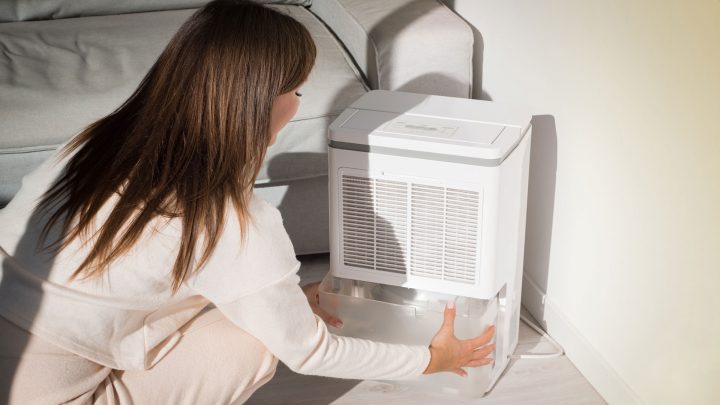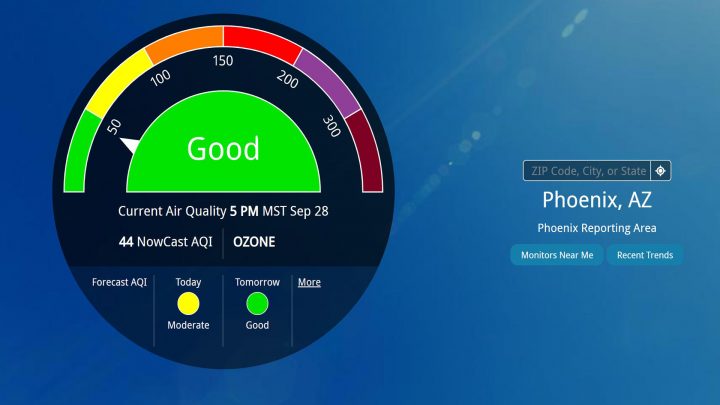This hot, dry summer created the ideal environment for explosive wildfire conditions across the Western US. Many communities saw significant losses, with homes and forests destroyed in hours. The effects of this devastation were felt a surprising distance away. Smoke, soot and particle pollution traveled hundreds of miles to create air pollution in areas that experienced no direct wildfires (look at fires and smoke near your home). That's why understanding Indoor Air Quality (IAQ) is key to make sure you can breathe healthy.

Micro-particles from these fires put children, the elderly and people with certain health problems at particular risk. Depending on where you live, you now need to check the Air Quality Index (chart below) in addition to other weather conditions, to decide when the air is safe for outdoor activities, and when it’s better to stay inside.

Breathe Healthy & Facing the Risks
The days when we could always go outside, or send our kids out, to benefit from “fresh air” are over. Wildfires are just the latest addition to the many pollutants we face every time we step out our front door (read: What is Healthy Air?). Unfortunately, staying inside may not be a better alternative as indoor air pollutants are also increasing.
Today’s energy-efficient homes, while much better for both the environment and our budgets, make it more difficult to maintain good air quality inside our homes. The average air quality indoors is two to five times worse than outdoor quality. Learn more about Eco Homes: Energy, Water & Air Quality.

You may accidentally introduce some common sources of indoor air pollution when you build or renovate your home. VOCs are released by many new products from flooring and furniture to paint. The term “off-gassing” is used to describe the reaction when these products release their pollutants into your home. The most familiar example of VOCs is the so-called “new-car smell, which is bad for you. Other examples of indoor air pollutants include radon, which comes from the ground and varies from house to house, carbon monoxide, lead, asbestos, pesticides and biological pollutants.
How to Maintain Healthy Indoor Air
If you live in an area that is at risk due to the current wildfire situation, or if you’re just planning to keep your family inside more as winter approaches, what options do you have to make sure your indoor air is as safe as possible? Here are some simple steps you can take that will make a real difference.
- Don’t smoke and don’t allow smoking in your home. Second-hand smoke is one of the most dangerous pollutants for children, the elderly and those with respiratory illnesses. Smoke and particles linger for years. Create an outdoor alternative for smokers if necessary.

- Be vigilant about moisture. In humid areas, mold is a significant risk. Check monthly for leaks and focus on drying wet things quickly. If a room feels stuffy or unusually damp, test for mold and find the source of the problem … and eliminate it. Mold can cause health issues so don't delay and consider a room or home dehumidifier if needed.
- Check your home for radon. This is relatively easy and inexpensive, and too important to ignore. You can purchase a DIY test kit that lets you sample the air in your home. Then you mail the sample gathered to get the test results.
- If you have an older home, check for asbestos and lead paint or lead pipes before remodeling. Don’t put yourself or your family at risk to save a few dollars. Both products, removed improperly, can make your home dangerously unsafe.
- When remodeling, buy non-toxic paint, flooring and furniture to reduce the VOCs introduced into your home.
- Add carbon monoxide detectors to your smoke detector system, particularly if you use natural gas or propane in your home. They're required in more than half the states and inexpensive so every home should have them.

- Replace HVAC filters on a consistent schedule. Some homeowners add an ultraviolet light system to their HVAC system to reduce mold, bacteria and viruses (read Do UV Lights for HVAC Actually Work? for more info). Get a vacuum with a HEPA filter.
- In areas affected by wildfires, air purifiers may benefit people who have illnesses where it's important for them to breathe healthy air. You can learn more in this Good Housekeeping article, Do Air Purifiers Actually Work?

Making Balanced Choices
We can’t spend our entire lives hiding from the great outdoors and worrying about what might happen. Airnow.gov (shown above) is a great resource to help you keep up-to-date on the air quality in your specific area. There may be days in the future when it’s really better to just stay inside but when the sun is shining and the air is fresh and clear, take advantage of it.
Remember, it’s preparation, not panic, that will keep us ready for the future.











Love this article! Indoor air quality is so important. As a home builder I would definitely recommend to new homeowners to invest in air purifiers and the best in HVAC systems to make sure as much dust, pollen, pet dander and more is eliminated from the home.